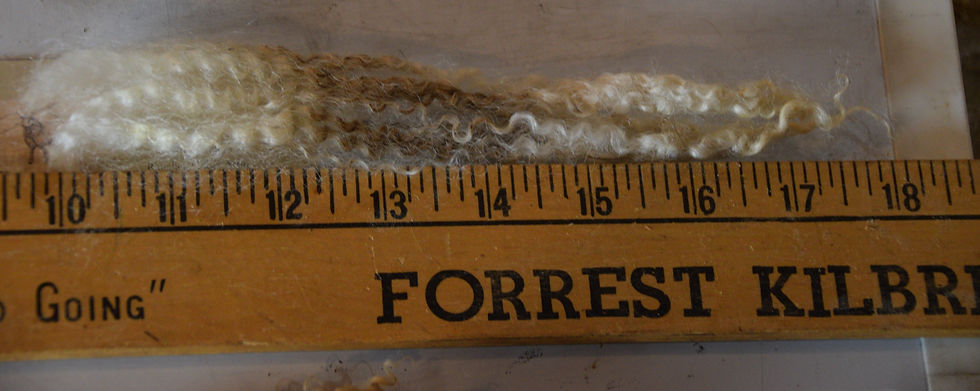I’ve been spinning about five years. I began with some roving. From that I learned to produce singles and to ply yarn. I really enjoy spinning and it has been a nice way for me to spend time with my husband as he watches television in the evenings. As I would spin, it didn’t take long before I started wondering if different types of roving would create different yarns? Would the wool and/or blended fibers that was used to produce the roving have different characteristics, a different feel as I drafted and spun?
Also not too long after I began spinning, I decided to join a spinning guild with some friends and as fate would have it the guild happened to be exploring different wool fibers. No roving, but the actual locks from various fleeces. It was an exploration of breeds study. I was thrilled! The study included some purebred sheep wool and wool from some sheep that were “blends” as well. We would receive a baggie of “washed” locks.
Basically our guild president secured six to eight fleeces, each a different breed. Then he and a couple of guild members cleaned the fleeces, identified the breed on a slip of paper, and placed some of the cleaned locks with the identifying slip in baggies for us. At the meeting the baggies would be dispersed and we would take them home and prep the locks sample to spin. The next month we would return with our spun yarn and discuss what we saw, how the fiber drafted, felt, describe how it spun, did we like it…. Some of the members knit up little sample socks – about 1.5 inches by 2.5 - 3 inches. Then we would pass the socks around to see how the wool had knit up, what if felt like, the elasticity, etc.. It was a really great way to learn breeds and subsequent yarn outcomes.
Sometimes we spun straight from the locks – who knew? Sometimes we carded or combed the locks into rologs or “nests” as we called them, and spun from those. I was really enjoying this process of preparing the locks too. (It wasn’t too long after that, that I began purchasing my own fleeces because I loved it all.) Some staples were longer than others, some wool was coarser, had tighter crimp, or had more luster. Most of the breeds were naturally colored. The colors included grays, charcoals, browns. I feel blessed by the experience and keep trying new breeds to discover their secrets. I do have a few favorites, but I also hope to continue to find new breeds – to me, to explore their uniquenesses. I’ve even spun yak and camel, plus several plant fibers. It also is so interesting to spin a fiber that is three inches long and then spin a lock that is twelve to fourteen inches long. Or hair verses wool. (Some breeds have double coats.) Keeps you on your toes.
So, when you spin, do you explore what different fibers from different sheep, or fiber animals generate? Or are you content to grab a nicely dyed roving or top and spin that? If you have never even thought about it, let me encourage you to release that curious side and try a fiber you have not yet spun. And then share your discoveries. I would love to hear your discoveries.




Comments